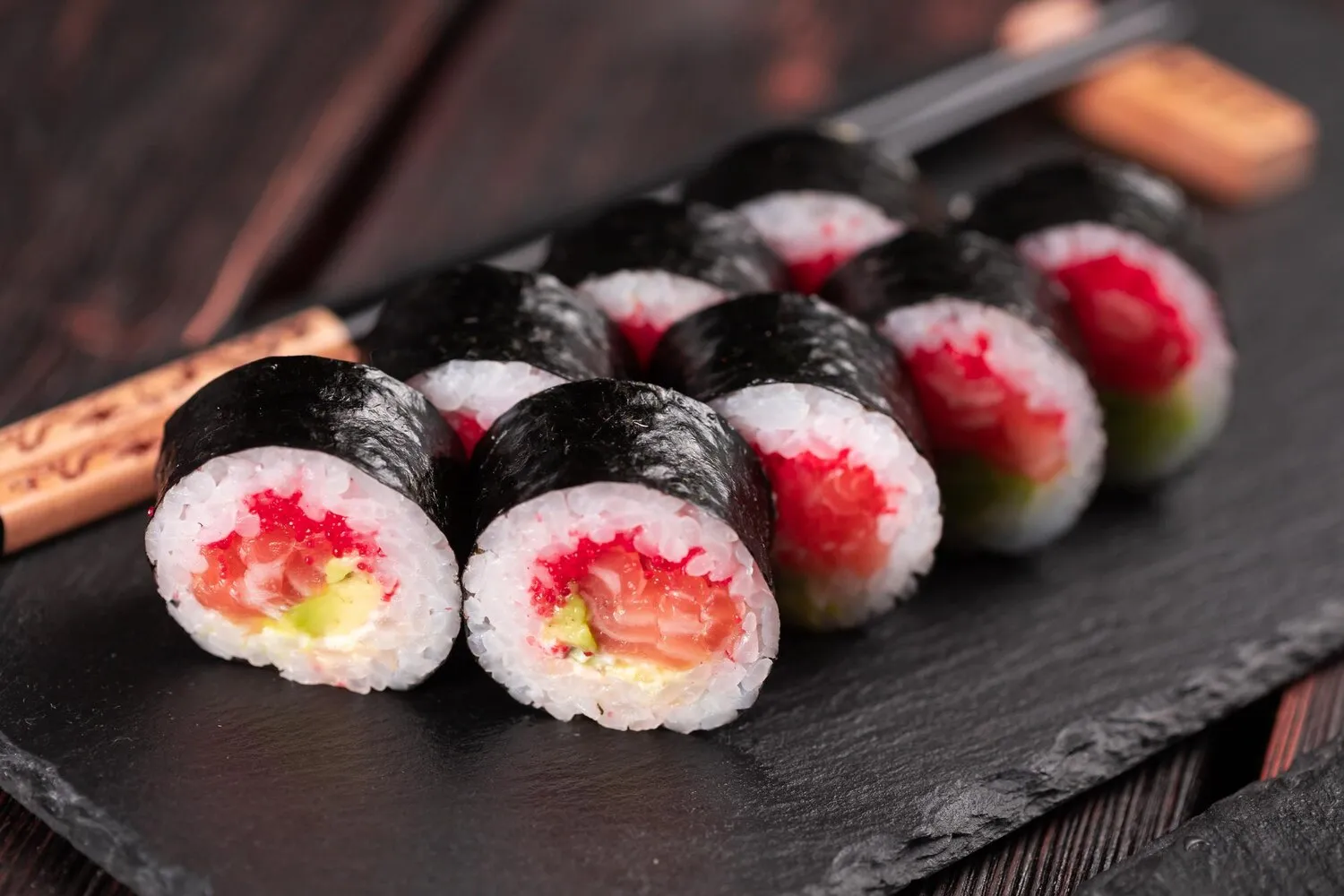
Maki
Maki is a type of sushi that consists of rice and filling rolled in seaweed. Maki sushi comes in a variety of sizes, some of which are only one bite.
Nutrition Facts
* The % Daily Value (DV) tells you how much a nutrient in a serving of food contributes to a daily diet. 2,000 calories a day is used for general nutrition advice.
The origins of maki sushi can be traced back to the preservation methods of fish in rice, known as narezushi. Over time, this evolved into quicker methods where the rice was eaten with the fish. Maki as we know it today gained popularity during the Edo period as a convenient and portable food.
Maki is deeply ingrained in Japanese culinary culture, representing both tradition and innovation. It's a staple at restaurants, home meals, and special occasions.
Presentation
The aesthetic presentation of maki is highly valued, with attention paid to color, shape, and arrangement on the plate. It's considered an art form to create visually appealing rolls.
Social Dining
Maki is often enjoyed as part of a shared meal, encouraging communal dining and conversation. Sharing a platter of assorted maki is a common social experience.
Adaptation
While rooted in tradition, maki has seen significant adaptation and fusion in other cultures, leading to diverse variations and ingredient combinations reflecting local tastes.
Maki offers a diverse range of flavors depending on the fillings used, but generally features a balance of savory, umami, and sometimes sweet or spicy notes.
The primary flavor foundation is the vinegared sushi rice, which provides a slightly sweet and tangy base. Nori seaweed contributes a distinct savory and slightly salty, ocean-like taste. Fillings can vary widely. Common choices include seafood like tuna, salmon, or crab, offering rich umami flavors. Vegetables such as cucumber, avocado, and carrots add freshness and crunch. Pickled radish (daikon) provides a sweet and sour element. Wasabi and ginger are often served alongside as palate cleansers and to add a spicy kick or refreshing note, respectively. Soy sauce adds saltiness and enhances the umami of the dish.
Rice Preparation
Properly prepared sushi rice is crucial. It should be cooked to the right consistency and seasoned with a balanced mixture of rice vinegar, sugar, and salt. Allow the rice to cool slightly before using it to assemble maki.
Cutting Techniques
Use a very sharp, slightly moistened knife to cut the maki rolls cleanly. Wipe the blade after each cut to prevent sticking and ensure even slices.
Fresh Ingredients
Use only the freshest ingredients, particularly seafood, to ensure the best flavor and safety. Choose high-quality nori seaweed for a crisp and flavorful wrap.
Explore additional Sushi dishes and restaurants
Explore SushiDiscover top dining spots and culinary experiences in Namur.
Explore NamurLearn more about the food culture, restaurant scene, and culinary heritage of Belgium.
Explore Belgium